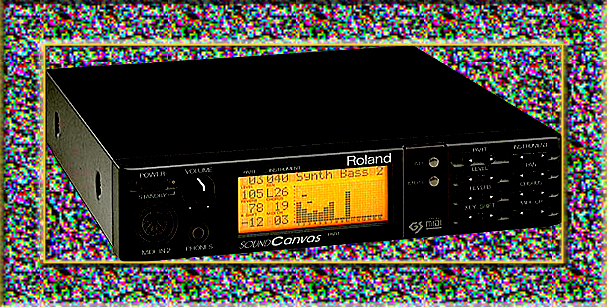General Midi
So Many “Standards”. Here’s Three Worth Knowing.
General Midi
This was a set of statutory requirements established in 1991 to allow MIDI data to be interchangeable between certified devices.

The standard deemed that, amongst other things, compatible synthesisers must sing with up to 24 concurrent voices across 16 channels and produce a differing timbre on each, in addition to observing a blueprint of 128 instruments arranged in a specific order and categorised into 16 groups. As a consequence, a vast cross-section of music hardware and software empires, including those most prolific in game design, adopted the matrix and developed their wares in strict accordance with its guidelines.
Thus, even when fostered by a battle scarred Sound Canvas, a reference level general midi bank remains priceless for the old time adventurer longing to relive their point n click pursuits of 90’s and whose worthy but wanton Soundblaster could never adequately reveal the spellbinding motifs within Lucasart’s and Sierra’s greatest hits. By contrast, a flourishing 21st century flagship whose sample count was surpassed only by its price tag may be casually cast aside if those crucial 128 waveforms fail to shine.
GS General Sound
GS, known also as Genral Sound or General Standard, was Roland’s proprietary and embellished paraphrase of General Midi. Compliant devices, not least Roland’s own Sc-55, which premièred the format, observed all the directives imposed by its forerunner, whilst introducing a bevy of 98 instruments, 8 extra drum kits, a trio of bonus effects, and a series of system exclusive commands that permitted extensive characterization of individual tones.

Adopters could produce compositions richer in detail and with such musically expressive attributes as sustenato (soft pedal) and portamento (sliding one note to the next).
General MIDI 2
Finalized in 1999, GM2 is best thought of as an infusion of its first incarnation and Roland’s already established GS format and was intended to promote the development of more advanaced MIDI machinations, whist ensuring their compatibility was preserved and as much content as possible remained interchangeable. The timbral demands were unaltered, the polyphonic threshold raised from 24 to 32 simultaneous voices and the palette of instruments doubled to 256.
The additional entries were categorised into bank variants alongside the original blueprint of 128, whilst every instrument was grouped with its closest relations, ensuring the same patch number could be used to access it. Other stipulations came in the form of mandatory controls for expression, including adjustable vibrato, portamento, sustenato and modulation. Compulsory reverb and chorus effects with gradation for both, and the essential presence of definable attack and release times.




